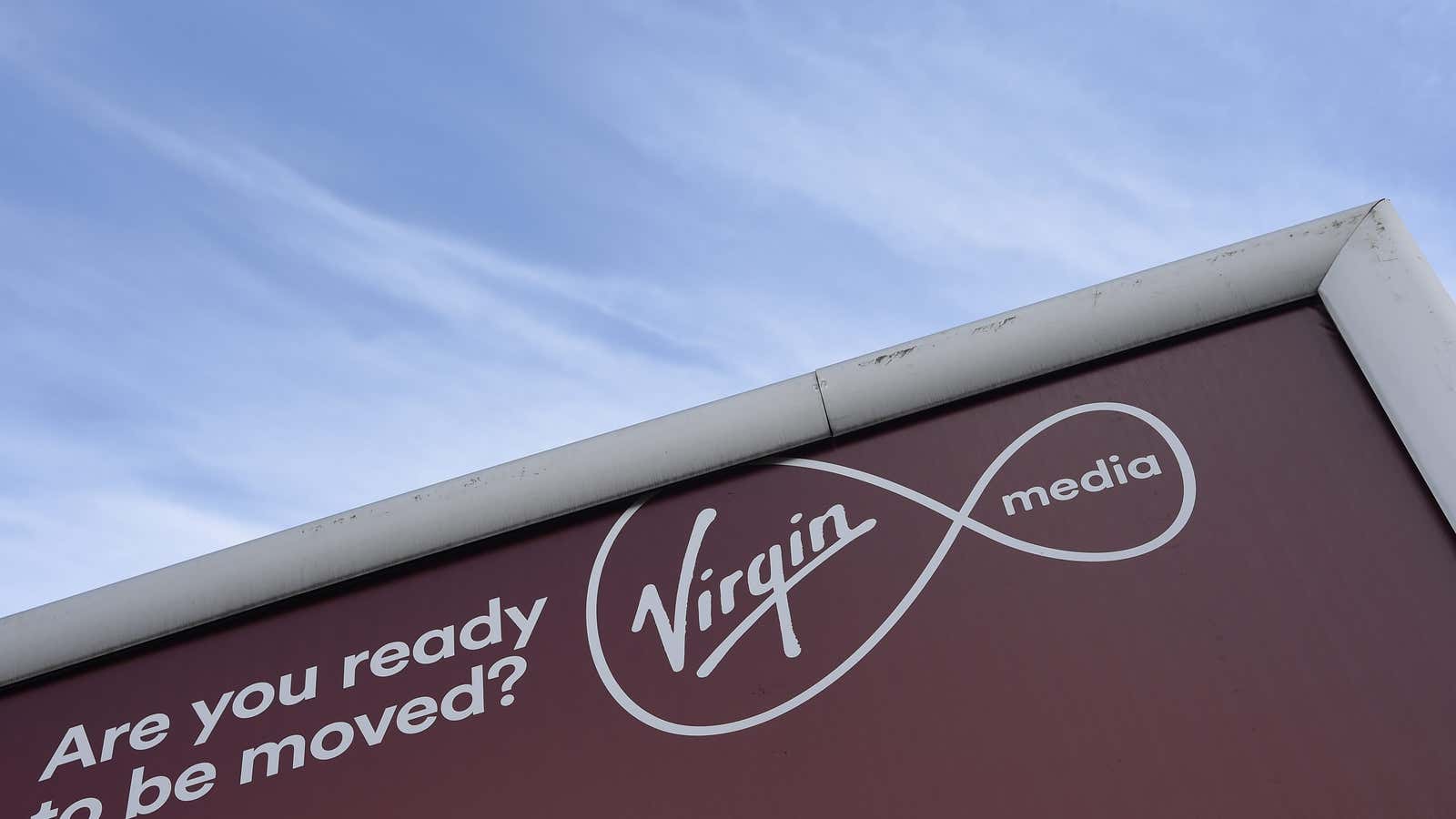Cable operators in Europe have staved off the worst effects of cord-cutting—for now.
The European cable market lost TV subscribers last year as customers were able to watch more shows unbundled, but still managed to boost revenue through expanded, higher-end offerings, according to a new report.
Gross cable revenues in the European Union rose 5.6% to €22.4 billion ($23.4 billion) in 2015, the most recent year for which data was available, even as cable-TV subscriptions fell 1% to $55.1 million, found research firm IHS Technology and trade group Cable Europe.
Pay-TV operators such as Virgin Media and Liberty Global managed to buck the revenue-gashing effects of cord-cutting by expanding premium services including high-speed internet and high-definition TV, the report said. Virgin Media, for example, invested $3.7 billion to grow its broadband reach in the UK from 13 million to 17 million households by 2019, the report notes. The company, which was bought by Liberty Global in 2013, reportedly grew profits by 38% last year, thanks to record broadband subscriber growth.
“In response to challenges posed by other platforms, 2015 saw a determined effort by many operators to invest in infrastructure and significantly improve their offerings,” wrote Maria Rua Aguete, author of the report and research director at IHS Technology.
Other operators across Europe have also been upgrading their broadband networks to offer download speeds as high as 1GB per second, the study noted—compared to the average of about 38MBs per second in the European Union. The ultra high-speed internet service would enable newer services that eat up a lot of data like ultra high-definition TV and video streaming on mobile.
Similar efforts are underway in the US, where cable operators have had more difficulty dealing with changing viewer trends. Gross revenue from US cable providers rose 4% to $94.7 billion in 2015, slightly less than in Europe, with TV comprising 53% of that, IHS Technology showed in a different study. TV subscribers fell 0.8% during the same period.
Part of the reason growth was stronger last year in the European cable market than in the US was that things like high-definition screens and digital TV were less mature, which meant there was more room to grow.
In the US, 79% of digital-cable-owning homes had HD TV service in 2015, while only 54% did in the European Union. Two-thirds of cable homes also opted for digital TV in the European Union, compared to 72% in the US. It remains to be seen whether the European Union will continue to avoid the pain US operators have been feeling from cord-cutting (paywall), as these markets reach saturation.
Some cable companies in Europe have also been embracing the very streaming services that have threatened their businesses, such as Netflix—a trend that is only now starting to take off in the US, where the relationship between streaming and traditional cable companies has been more contentious.
Liberty Global began offering Netflix in Europe through Virgin Media in 2013, for example. In September, it signed a new deal to bring Netflix to its more than 29 million customers through its set-top box. But US-based Comcast only managed to ink a similar deal with Netflix that went into effect in November.
